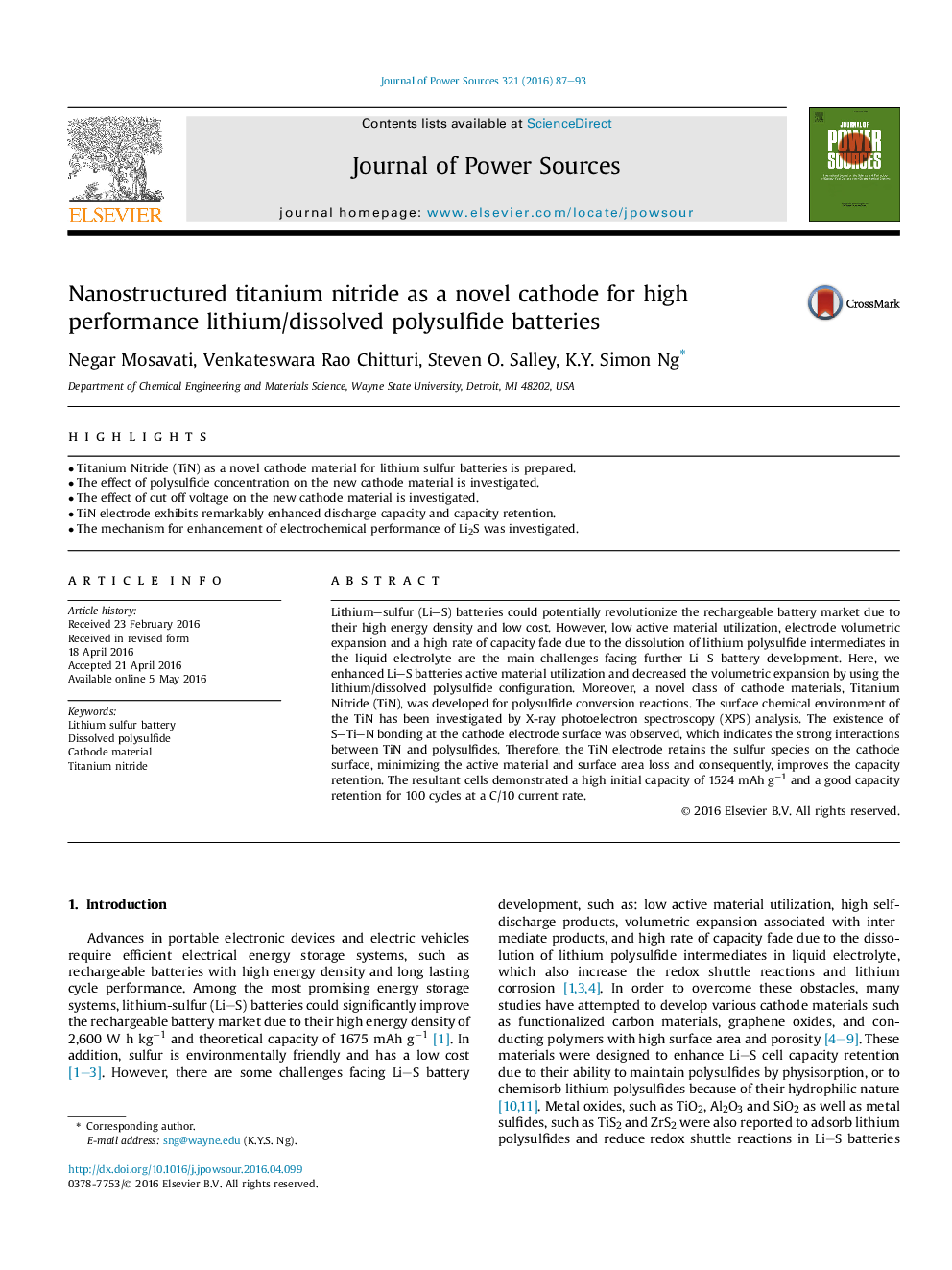| کد مقاله | کد نشریه | سال انتشار | مقاله انگلیسی | نسخه تمام متن |
|---|---|---|---|---|
| 1291788 | 1497911 | 2016 | 7 صفحه PDF | دانلود رایگان |
• Titanium Nitride (TiN) as a novel cathode material for lithium sulfur batteries is prepared.
• The effect of polysulfide concentration on the new cathode material is investigated.
• The effect of cut off voltage on the new cathode material is investigated.
• TiN electrode exhibits remarkably enhanced discharge capacity and capacity retention.
• The mechanism for enhancement of electrochemical performance of Li2S was investigated.
Lithium–sulfur (LiS) batteries could potentially revolutionize the rechargeable battery market due to their high energy density and low cost. However, low active material utilization, electrode volumetric expansion and a high rate of capacity fade due to the dissolution of lithium polysulfide intermediates in the liquid electrolyte are the main challenges facing further LiS battery development. Here, we enhanced LiS batteries active material utilization and decreased the volumetric expansion by using the lithium/dissolved polysulfide configuration. Moreover, a novel class of cathode materials, Titanium Nitride (TiN), was developed for polysulfide conversion reactions. The surface chemical environment of the TiN has been investigated by X-ray photoelectron spectroscopy (XPS) analysis. The existence of STiN bonding at the cathode electrode surface was observed, which indicates the strong interactions between TiN and polysulfides. Therefore, the TiN electrode retains the sulfur species on the cathode surface, minimizing the active material and surface area loss and consequently, improves the capacity retention. The resultant cells demonstrated a high initial capacity of 1524 mAh g−1 and a good capacity retention for 100 cycles at a C/10 current rate.
Journal: Journal of Power Sources - Volume 321, 30 July 2016, Pages 87–93
